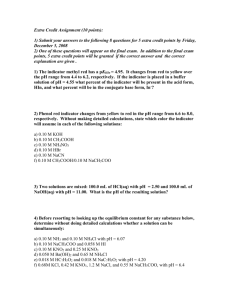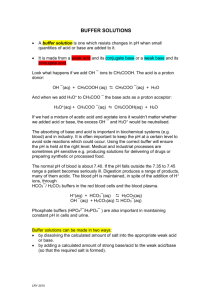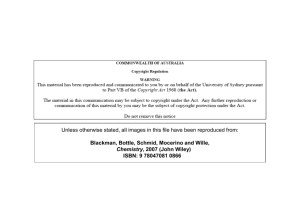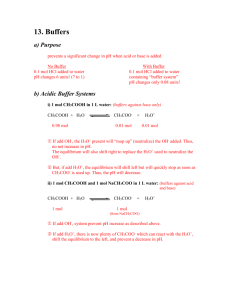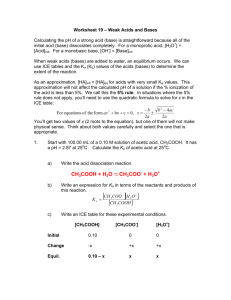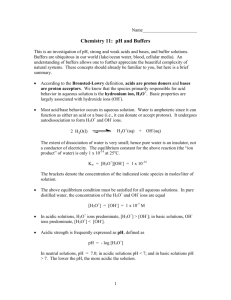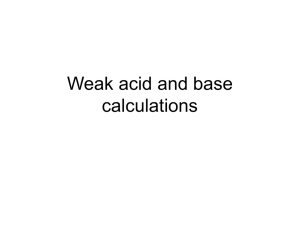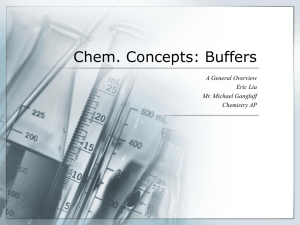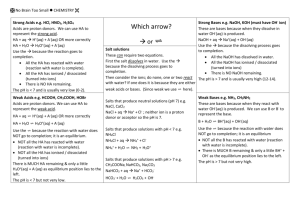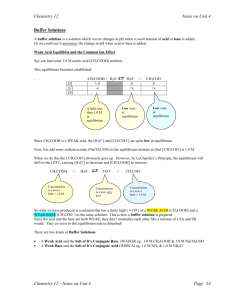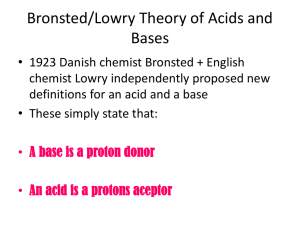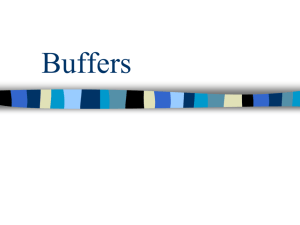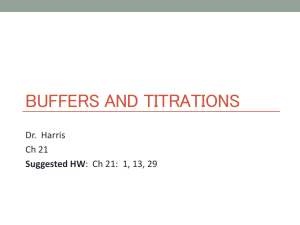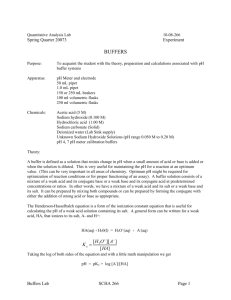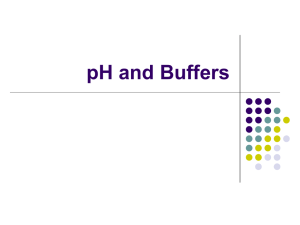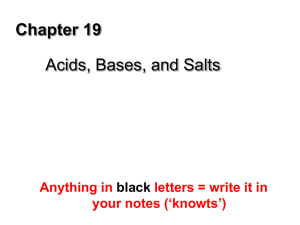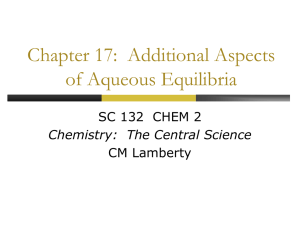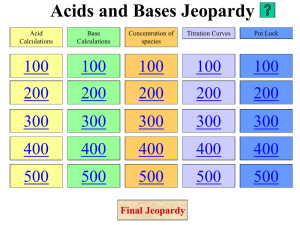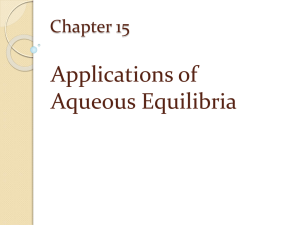Buffers and indicators
advertisement
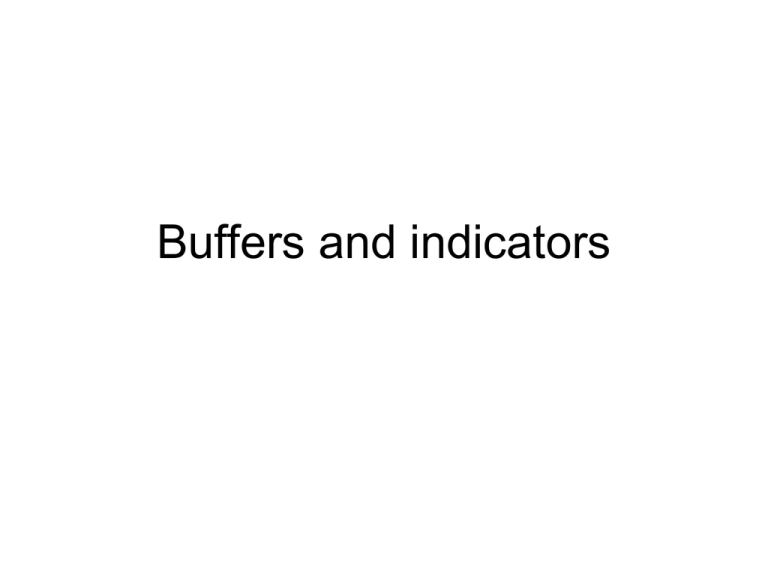
Buffers and indicators Buffers Buffers are solutions which resist changes in pH They are composed of approximately equal concentrations of a weak acid and its conjugate base. An example of an important buffer is in human blood – HCO3-/CO32- buffers our blood at a constant 7.4. What you need to know how to do: 1. The definition of buffers and what they are composed of 2. How to write equations to show a buffer acts to maintain pH 3. How to identify buffering regions on titration curves 4. How to calculate the pH and composition of buffers 1. Equations of buffers E.g. write equations to show how a buffer composed of ethanoic acid and ethanoate ions acts to maintain pH when small amounts of H3O+ and OH- are added. When acid is added: Reacts with the base as follows: CH3COO- + H3O+ → CH3COOH + H2O When base is added: Reacts with the acid as follows: CH3COOH + OH- → CH3COO- + H2O Buffer sections on titration curves On a weak acid/strong base titration curve and a weak base/strong acid curve, a buffer region can be observed. 1. It can be seen soon after the addition of the strong base to the weak acid where the curve is flat – no change in pH. This is also where pH=pKa – i.e. half the moles of base added [CH3COOH]=[CH3COO-] The same applies to the weak base/strong acid curve. Buffer calculations Use the Ka expression for the weak acid part of the buffer. E.g. calculate the pH of a buffer made by adding 0.1 moles of CH3COOH to 1 L of a 0.1 molL-1 solution of CH3COO-. Ka (CH3COOH) = 1.74 x 10-5 1. Write an equation for the weak acid; CH3COOH + H2O → CH3COO- + H3O+ 2. Write the Ka expression: Ka = [H3O+][CH3COO-] [CH3COOH] 3. Substitute the numbers in and solve: 1.74 x 10-5 = [H3O+][0.1] [0.1] [H3O+] = 1.74 x 10-5 pH = - log (1.74 x 10-5) =4.76 Another question: You have 2 beakers each containing a litre of solution at pH 9.25. Beaker A contains a buffer of 1 molL-1 NH3 and 1 molL-1 NH4+. Beaker B contains 1.78 x 10-5 molL-1 NaOH. Q: Using equations AND calculations, explain what would happen when you add 1 drop (0.01 mol) of HCl to each beaker. Ka (NH4+) = 5.75 x 10-10 Beaker B: NaOH + HCl → 1.78 x 10-5mol 0.01 mol 1.78 x 10-5mol 1.78 x 10-5mol None left! 0.000998 mol NaCl + H2O Therefore, pH = - log 0.000998 molL-1 HCl I C E =2 ctd…. Beaker A: Buffer – if you are adding HCl it will react with the base part of the buffer NH3 + HCl → NH4+ + Cl1 -0.01mol 0.99 0.01 mol - 0.01 mol 0 1 +0.01 1.01 I C E Now calculate the new pH of the buffer using the Ka for the weak acid Ka = [H3O+][NH3] [NH4+] 5.75 x 10-10 = [H3O+][0.99] [1.01] pH = 9.23 Indicators Indicators are weak acids that have different colours for their conjugate base: HIn + H2O → H3O+ Colour 1 + InColour 2 Choosing an indicator: To choose an indicator that changes colour at the equivalence point of your titration, you must choose one that has a pKa value approximately equal to the pH at the equivalence point. This means it will change colour at the pH at equivalence point (where n(acid) = n(base)) and therefore the end point (where the colour changes) will = the equivalence point (where the reaction is complete)
